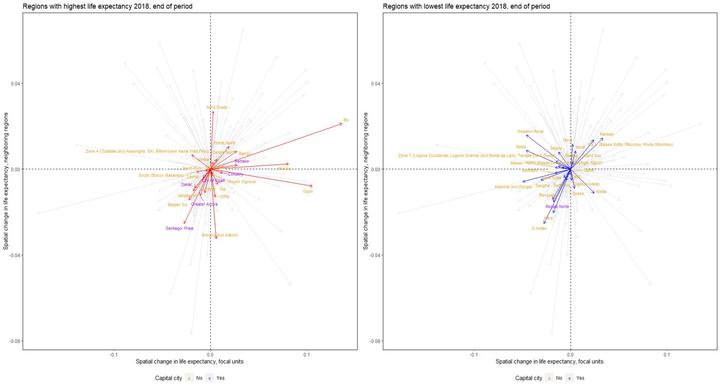Health inequality in West and Central Africa: Enhanced evidence from a Spatiotemporal distributional dynamics analysis.

Abstract
This study applies the exploratory space-time data analysis (ESTDA) with its new geo-visualization technique, the directional LISA, to explore a particular aspect of health inequality in space-time dynamics in West and Central Africa. It takes the analysis of health distribution in West and Central Africa a step further and explores the dynamics of regions with the lowest and highest longevity proxied by life expectancy at birth. Moreover, the study questioned the widely held belief that capital cities, which are usually the better off in terms of investments and infrastructures, are expected to have the highest life expectancy levels. It examined the regions with the highest and lowest longevity in each of the 26 countries of the Economic Community of West African States and the Economic Community of Central African States over two subperiods, from 2008 to 2018. It used the subnational life expectancy at birth provided in the new Subnational Human Development Index database. Results show that though it is true that health is improving in West and Central Africa, very few regions are moving in a positive or leading co-movement. Moreover, the dominant movement of the capital cities is a negative co-movement. Stronger West-Central cooperation on the issues related to emergency response, surveillance, research and development, and innovation, all in a political-instability-free setting, is among the recommendations to ensure West and Central African country have within reach the objective of closing the gap by 2030.